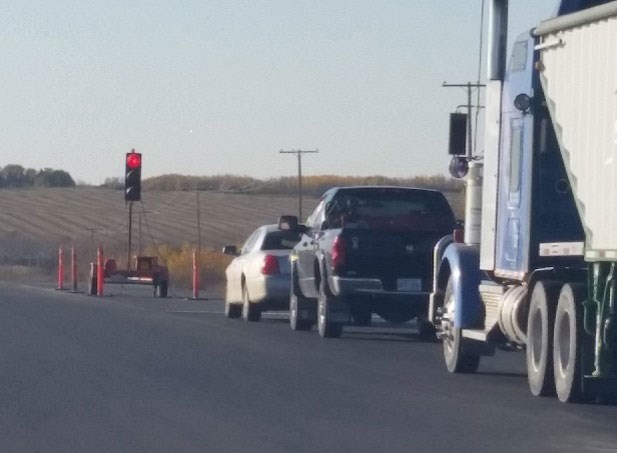The call is going out once again by the Saskatchewan government, urging motorists to take work zone safety seriously during the new highway construction season.
“The safety of construction crews and the travelling public is our number one priority,” said Nancy Heppner, highways and infrastructure minister. “Innovation along with public education and enforcement, is at the forefront of our efforts to improve work zone safety.”
In addition to an annual public education campaign, new technology is being introduced fo the construction season.
An automated flagger assistance device (AFAD) was recently given a test run in Saskatchewan. The decision to pursue this technology was the result of collaboration between the Ministry of Highways and Infrastructure staff and Potzus Ltd. The AFAD is a mechanically operated “stop-slow paddle” or “red-amber signal” device that is visible to motorists approaching the work zone. It is operated remotely by a flagger positioned outside of the travel lane.
“We want to eliminate injuries and deaths in work zones,” Potzus Ltd. human resources and training manager, Brennan Wiens said. “This device has tested well on the road with an immediate positive motorist response. By taking some of the most at-risk workers off the road surface, this device will go a long way in ensuring the safety of our employees.”
The flagger is the most exposed position in a work zone and options such as AFAD allow the flagger to stand at a safer distance while remotely signalling and controlling traffic.
Recent improvements to work zones include simplified signage with regulatory black and white maximum speed limits, rumble strips and gates, photo enforcement and increased fines.
In August 2012, a flag person was struck and fatally injured in a work zone on Highway 39. Last year three separate collisions occurred where a vehicle ran into a traffic queue at a flagging station, in two of these instances, the flag person was injured.




